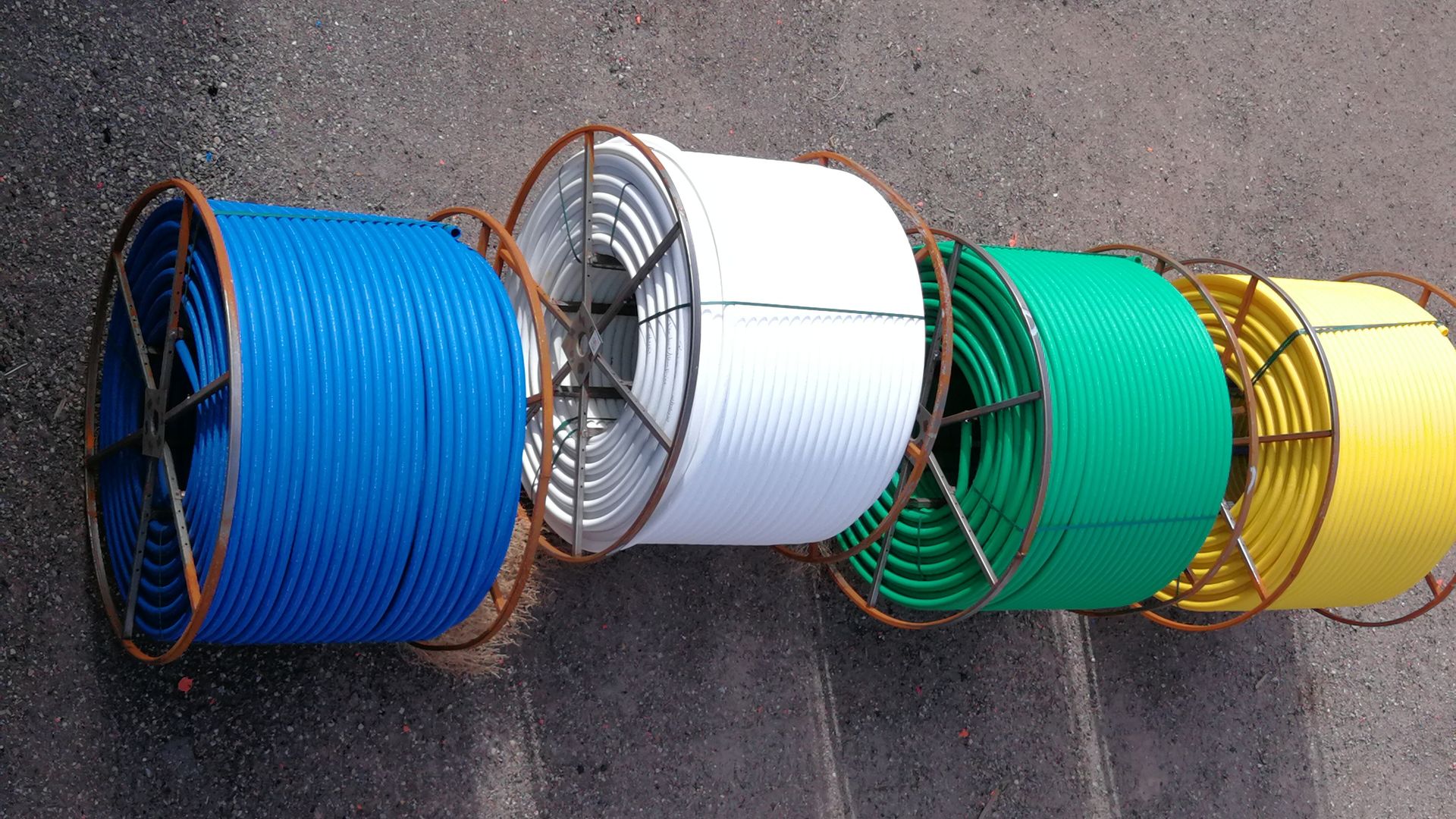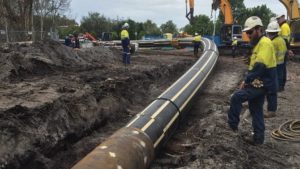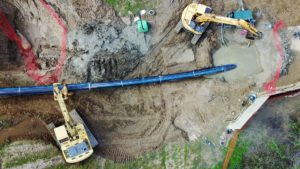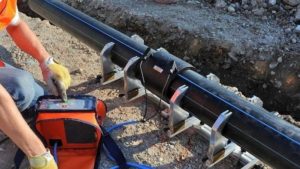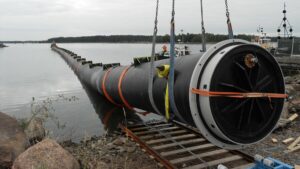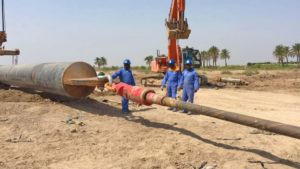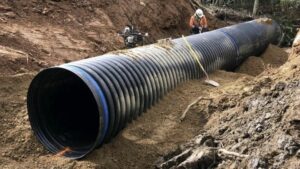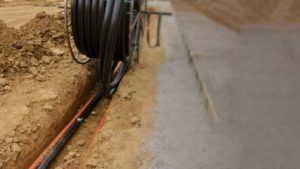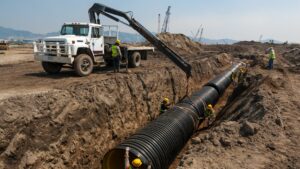The conduit industry has terminology specific to the industry and distinct from other industries using HDPE pipe. Firstly, the HDPE tube product that acts as a raceway for the cable is referred to as a conduit or duct, and these terms are generally used interchangeably within the industry.
Innerduct is conduit used inside another conduit to subdivide the larger duct and provide multiple pathways for installation of current and future cables. Cables are generally defined as power (electrical) or communication. Power cables can be high (>35KV), medium (15-35kV) or low (600V) voltage.
Among other uses, they are commonly used for providing transmission or distribution power, highway lighting, and irrigation system control. Communications cables are often either coaxial (typically used in CATV) or fiber optic designs, used for networks, data centers, telephony, SCADA, etc.
Applications
HDPE conduit serves two primary industries: communications (telephone, Cable TV (CATV), data transmission, etc.) and power (transmission, distribution or commercially installed electrical cable). HDPE conduit serves both OSP (Outside Plant) networks and ISP (Inside Plant) premise cabling and enterprise systems.
Communications
In the communications industry, the advent of fiber optic cable has had a tremendous impact due to its significantly higher data-carrying capacity, necessitated by the explosion of the internet, cloud computing, data centers, 5G wireless and Artificial Intelligence (AI). In telecommunications service (phone, data transmission), fiber optic cable is used, along with traditional copper cable.
In cable television service (CATV), the use of fiber optic cable is growing rapidly to supplement, or replace, coaxial cable. This progression toward fiber optic cable has made the need for cable protection more critical as these materials are sensitive to moisture and mechanical stress.
Damage can be very expensive in terms of service interruptions and replacement costs. Also, these cables are installed in very long, continuous runs that require a clear, protected pathway, as well as a leak-free system for air-assisted (“blow-in”) installations.
In addition to fiber optic cables, coaxial cables have also seen improvements that increase bandwidth making these materials more mechanically sensitive and requiring improved protection.
Power Transmission
In the power transmission industry, a critical requirement is maintaining uninterrupted electrical service as consumers and businesses are even less tolerant of power outages than they are of phone or communication service interruptions.
Although many direct buried power cable systems are designed for 30- or 40-year lifetimes, they are susceptible to external influences, like rock impingement and ground movement, that may require frequent repair.
Severe weather is the number one cause of power outages in the United States, costing the economy between $18 and $33 billion every year in lost output and wages, spoiled inventory, delayed production and damage to grid infrastructure. Also, threats to aerial installations from traffic and wildlife are ubiquitous.
North America’s electrical distribution grid is also an aging infrastructure that requires extensive upgrades to effectively meet 21st century energy demands and expectations for grid reliability and resiliency. The use of conduit is finding favor over direct burial cables in these applications due to improved protection, long continuous runs and the ability facilitate quick repairs.
HDPE conduit is used to carry both primary (substation to transformer) and secondary (transformer to end-user) cables. Some of these installations also contain fiber optic cables placed alongside the power cables to connect with load-monitoring sensors located throughout the network, known as SCADA (Supervisory Control and Data Acquisition) systems.
Underground installation of power distribution lines using HDPE conduit is a reliable, sustainable and economical solution. When utilities have a choice between burying power lines underground and installing aerial power lines in vulnerable or unsightly locations, experts encourage them to analyze lifetime costs of underground vs. aerial installations on a case-by-case basis, considering technical, economic and environmental factors.
Although initial installation costs of underground power distribution lines may be higher, installation by plowing of HDPE conduit and pulling cable can reduce underground construction costs.
Also, by utilizing modern horizontal directional drilling (HDD) technologies, underground power installations can be far less disruptive when replacing or upgrading existing infrastructure partially due to lowering refurbishment costs.
Whether for communications or power applications, HDPE conduit has significant advantages over other conduit materials.

